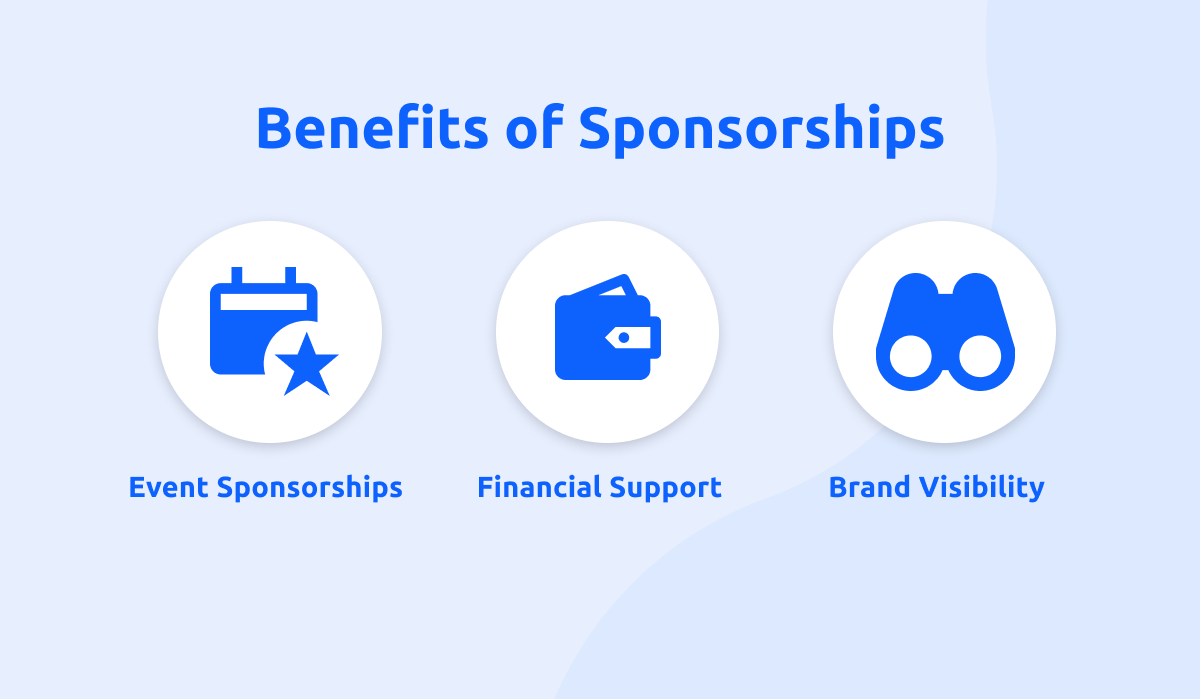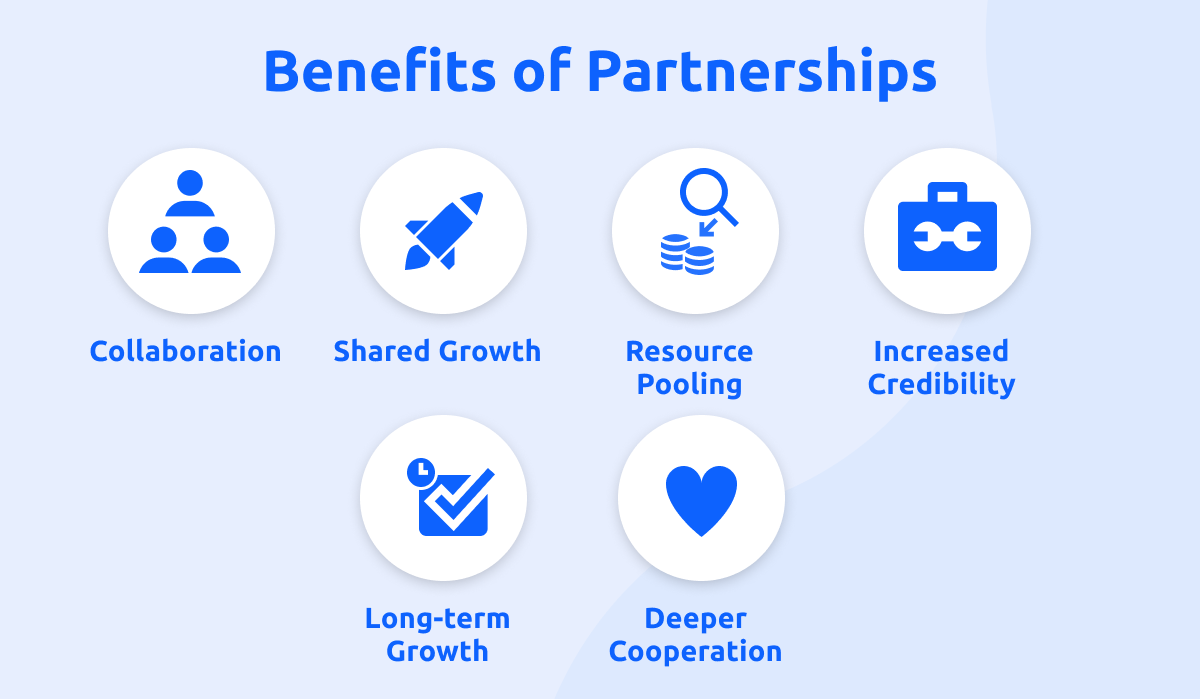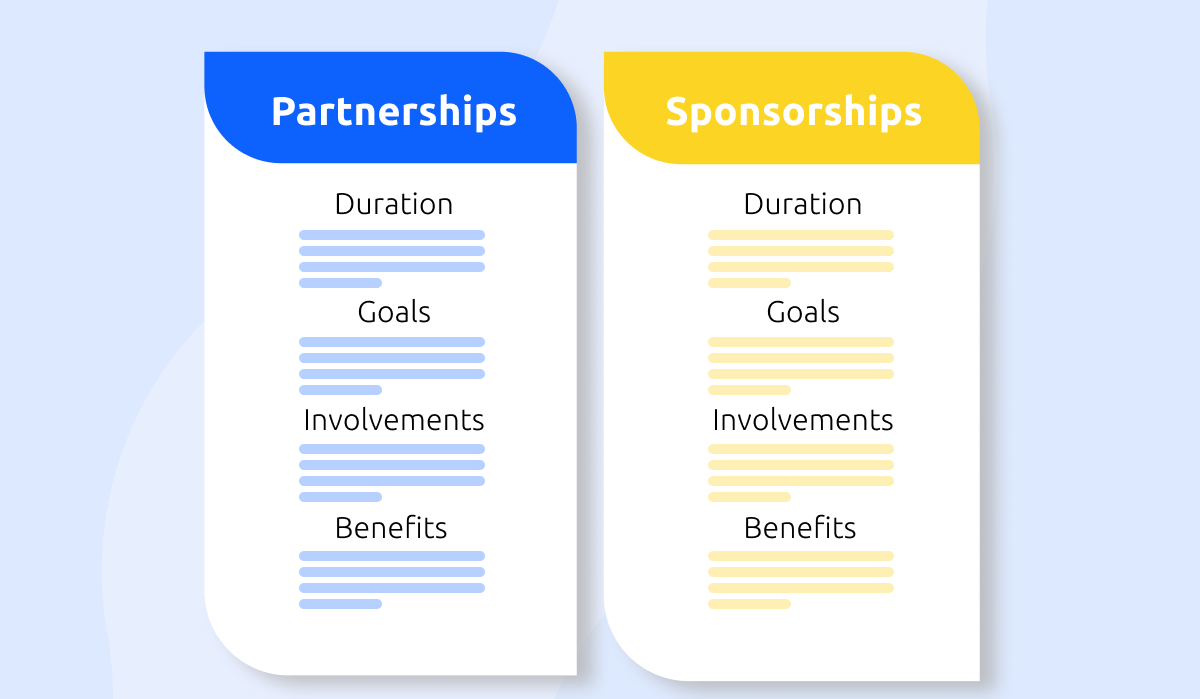
When your organization looks for external support, you’ll likely consider partnerships or sponsorships. Both provide financial and strategic benefits but serve different purposes. Sponsorships are typically short-term and transactional, offer brand visibility, and help fund specific initiatives.
Partnerships, on the other hand, involve deeper collaboration and long-term value. Let’s understand the differences to help you make the right choice based on your needs, resources, and objectives.
What Is Sponsorship?
Sponsorship is when a company provides financial or in-kind support in exchange for brand visibility and marketing opportunities. If your organization needs funding for an event, program, or campaign, sponsorship can help you secure resources and give your sponsor valuable exposure.
- Short-term and transactional: If you’re looking for a one-time financial boost, sponsorship lets you get the support you need without ongoing commitments. A local bank sponsoring a charity run gains logo placement on banners and T-shirts to support your cause.
- Brand visibility focus: Sponsorship is ideal when you need funding and can offer visibility in return. A beverage company sponsoring a major industry conference ensures its logo appears everywhere and its drinks are served at the event, which creates strong brand recognition.
- Minimal engagement: Sponsors typically don’t get involved in decision-making or strategy. A tech company funding a scholarship may provide financial support but will not influence student selection or the program itself.
- Best for marketing and fundraising: This is a great option if you want to raise funds and give your sponsor exposure. A fitness brand sponsoring a marathon aligns with its audience and helps cover event costs.
Benefits of Sponsorship

Sponsorship is a powerful way to secure financial support and boost brand exposure. It helps organizations host events, run campaigns, or launch initiatives and delivers measurable benefits for both parties.
- Financial Support Without Debt: Sponsorship provides funding without the need for loans or repayment, which will allow you to allocate resources effectively.
- Increased Brand Visibility: Sponsors gain valuable exposure through event branding, social media mentions, and promotional materials. Research shows that more than half of exhibitors report sponsorships to help improve brand awareness, increase booth traffic, and generate sales leads.
- Enhanced Credibility and Trust: A well-known sponsor can boost your organization’s reputation by associating it with an established brand. This credibility can attract more participants, customers, or attendees.
- Stronger Audience Engagement: Sponsors with aligned target audiences can enhance the attendee experience and make the sponsorship more meaningful. For example, a beverage company that sponsors a fitness event gains visibility and also connects with health-conscious consumers.
- Marketing and Advertising Advantages: Sponsorships often include co-branded marketing campaigns, media exposure, and PR opportunities that extend beyond the event itself. This added reach can amplify impact and drive long-term engagement.
What Is a Partnership?
A partnership is a long-term collaboration that helps organizations expand their reach, innovate, and create lasting value.
Unlike sponsorships, which are primarily financial transactions, partnerships involve deeper engagement, resource sharing, and mutual benefits beyond brand visibility.
- Strategic and long-term: Partnerships focus on ongoing collaboration rather than a one-time exchange. If you want to strengthen your organization over time, partner with a technology company to provide members with exclusive access to digital tools and create lasting value.
- Mutual benefits go beyond funding: Both parties contribute resources, expertise, and networks. For example, a healthcare nonprofit that partners with a pharmaceutical company can advance research, improve patient outreach, and establish shared credibility.
- High level of involvement: Partners actively participate in planning, decision-making, and execution. If your organization develops workforce programs, work with a local university to confirm both sides have input in shaping industry-ready talent.
- Stronger impact and sustainability: If sustainability is a priority, collaborate with an organization to launch initiatives that align with your mission and drive meaningful impact.
Benefits of Partnership

A strong partnership creates long-term value by encouraging collaboration, resource-sharing, and mutual growth. Unlike sponsorships, which are often short-term and transactional, partnerships build deeper connections that extend beyond financial support.
- Sustainable Growth and Stability: Partnerships create long-term stability by pooling resources and expertise. A study found that 96% of B2B leaders expect increased revenue from their partner ecosystems, which highlights the financial benefits of strategic collaborations.
- Access to New Markets and Networks: Partnering with the right organization opens doors to new audiences, industries, or geographic regions. A small business that partners with a larger company gains credibility and exposure that would be difficult to achieve alone.
- Shared Expertise and Innovation: A well-matched partnership brings fresh perspectives, skills, and insights. A technology firm that partners with an educational institution can develop advanced training programs while ensuring real-world application.
- Stronger Brand Trust and Credibility: Associations with reputable partners enhance an organization’s reputation. Microsoft, for example, generates 95% of its commercial revenue through partnerships, which proves how strategic alliances strengthen market positioning.
- Greater Impact and Longevity: Long-term partnerships lead to sustainable initiatives with lasting results.
Sponsorship or Partnership: Which Strategy Delivers More Value?

Now, it’s time to decide what would be best for you as an organization.
Ask yourself: What is your primary goal? Do you need quick financial support with no long-term obligations, or are you looking for a deeper, strategic relationship that drives long-term growth?
Choose Sponsorship If:
- You need immediate funding for an event, campaign, or initiative.
- Brand visibility for your organization or event is a top priority.
- A short-term, transactional relationship meets your needs.
- You want to attract sponsors that benefit from your audience exposure.
Sponsorship provides exposure through events, fundraising campaigns, and marketing-driven initiatives.
Choose Partnership If:
- You want a long-term collaboration that goes beyond financial support.
- Shared expertise, resources, and market expansion align with your strategy.
- Your organization seeks deeper involvement from the other party.
- Strengthening credibility and trust through association with a strategic partner is a key objective.
Partnerships are best for organizations aiming for sustainable growth, strategic alignment, and mutual long-term benefits.
Still Not Sure? Here’s How to Decide
- Prioritize your needs: If you need financial support fast, sponsorship is the way to go. If you need continuous collaboration and strategic growth, a partnership makes more sense.
- Evaluate your resources: Can you sustain a long-term commitment, or do you prefer a one-time exchange?
- Consider the impact: Do you want a short-term boost, or do you aim for long-term sustainability?
The right choice depends on your goals, but a partnership will deliver more value if your organization is seeking sustainable impact, long-term growth, and deeper engagement.
If short-term funding and brand exposure are your primary needs, sponsorship is the better option.
Glue Up: The All-in-One Solution for Partnerships and Sponsorships

Whatever you choose, partnerships or sponsorships, you need efficient, productive, and AI-powered association management software to manage it all effectively.
That’s what Glue Up is all about. As an all-in-one AMS, it simplifies the complexities of member engagement, revenue generation, and sponsorship management.
Let’s see how it helps.
- Drive revenue with sponsorships and memberships: Establish structured sponsorship opportunities and manage membership applications and renewals effortlessly.
- Automate membership and sponsorship workflows: Set up automatic reminders, invoicing, and renewals to ensure seamless collaboration with partners and sponsors.
- Engagement tracking and insights: Get real-time engagement scores to assess sponsorship and partnership effectiveness.
- Integrated CRM for better relationship management: Keep track of sponsors, partners, and key stakeholders in one place for improved collaboration and communication.
- Event and community tools for sponsorship activation: Promote sponsors through online and offline events, branded campaigns, and community interactions.
You need the right tools to maximize sponsorships and partnerships. Book a demo today to see how Glue Up can support your organization.



